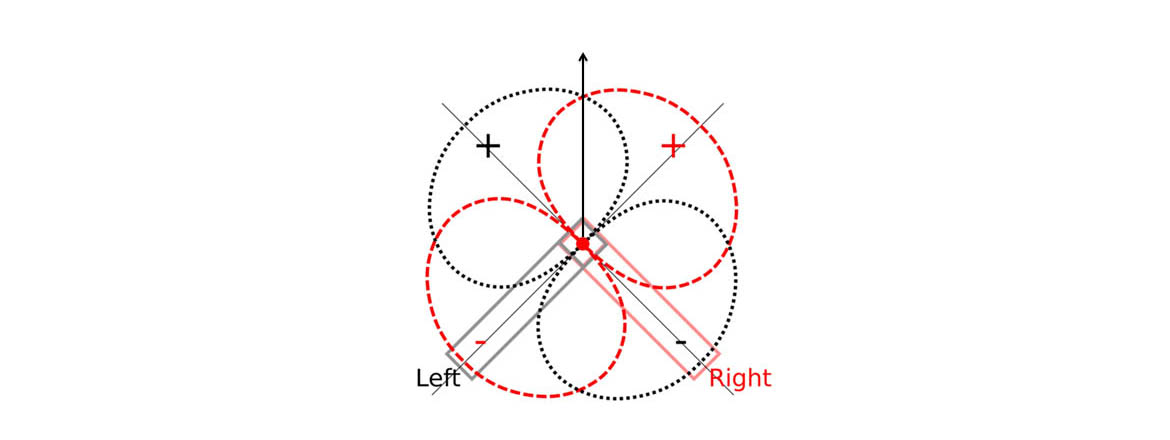A stereo microphone technique in which two coincident bidirectional microphones are angled 90 degrees apart (45 degrees to the left and right of center).
Blumlein Pair is the name for a stereo recording technique invented by Alan Blumlein for the creation of recordings that — upon replaying through headphones or loudspeakers — recreate the spatial characteristics of the recorded signal.
The pair consists of an array of two matched microphones of bi-directional (figure 8) pickup pattern, positioned 90° from each other. Ideally, the transducers should occupy the same physical space; as this is impossible the microphone capsules are placed as close to each other as physically possible, generally with one centered directly above the other. The array is oriented so that the line bisecting the angle between the two microphones points towards the sound source to be recorded (see diagram). The pickup patterns of the pair, combined with their positioning, delivers a high degree of stereo separation in the source signal as well as the room ambiance.
The Blumlein pair produces an exceptionally realistic stereo image, but the quality of recordings is highly dependent on the acoustics of the room and the size of the sound source.
Both ribbon and condenser microphones can be used for Blumlein pair recording.
A few types of stereo ribbon microphones
The Royer SF Series
AEA
have even been purpose-built for just this type of recording.
Several types of stereo condenser microphone (Neumann, AKG, Schoeps) have also offered a Blumlein arrangement as one of their possible configurations.
In his experiments at EMI with what he called "binaural" sound, Blumlein did not actually use this technique since he had no figure-8 microphones available, but the theoretical possibility of such a recording method was one of the claims he made in his U.K. patent application in 1931 (granted as patent #394325). This recording technique was named in his honor many years after his death.
The Blumlein stereo setup is a coincidence stereo technique, which uses two bi-directional microphones (figure-of-eight) at the same point and angled at 90° to each other. The configuration is also known as the Blumlein Pair. This stereo technique normally gives the best results when used at shorter distances to the sound source, as bi-directional microphones use pressure gradient transducer technology and, therefore, is under the influence of the proximity effect. At larger distances these microphones lose the low frequencies.
The Blumlein stereo setup purely produces intensity-related stereo information. It has a higher channel separation than XY-stereo. The disadvantage is that sound sources located behind the stereo pair are also picked up and reproduced with inverted phase.
The English engineer Alan Dower Blumlein invented this principle and it was first described in a patent from 1931.
DPA make some of the worlds finest microphones. Hear some glorious examples on this and other techniques by visiting: http://www.dpamicrophones.com/mic-university/principles-of-the-blumlein-stereo-technique


maybe amend to: "bidirectional (figure-8) mics"...?
maybe amend to: "bidirectional (figure-8) mics"...?